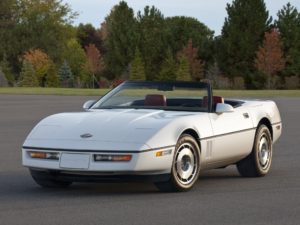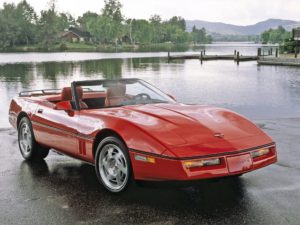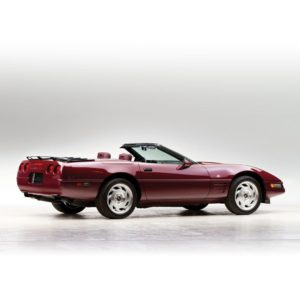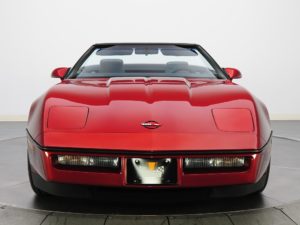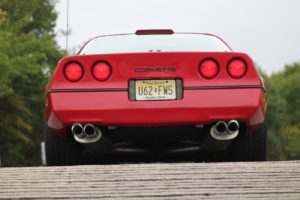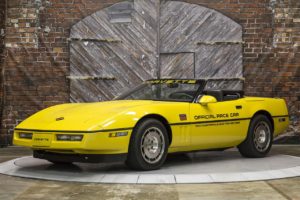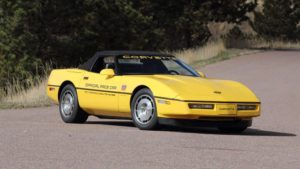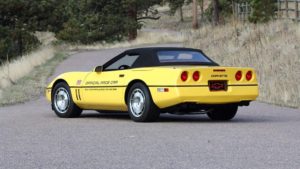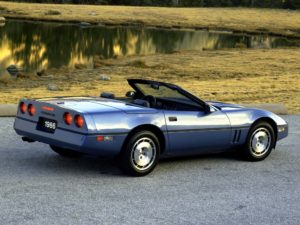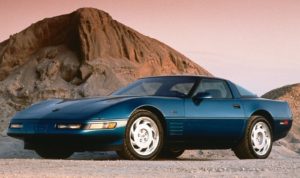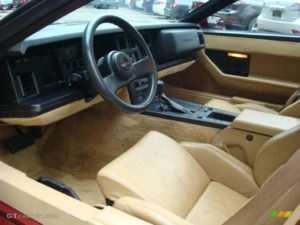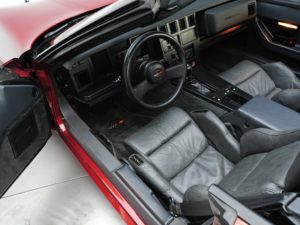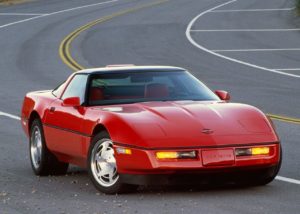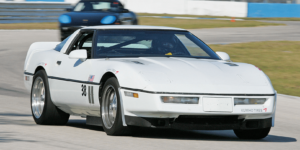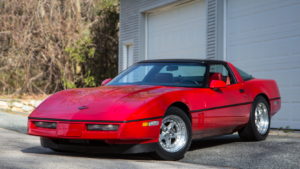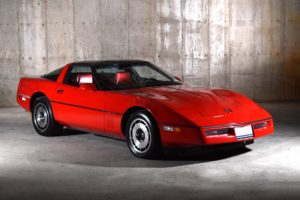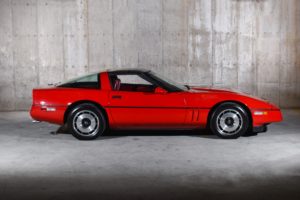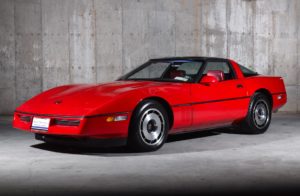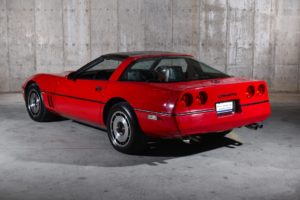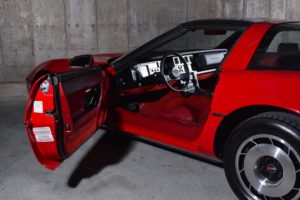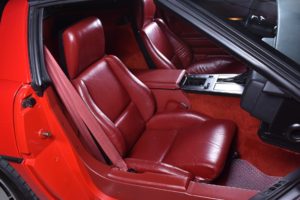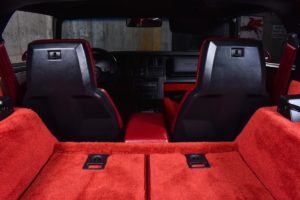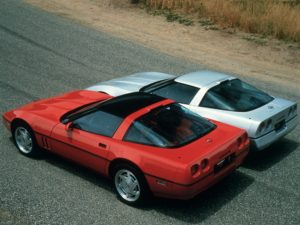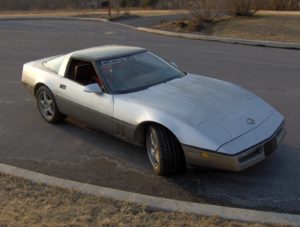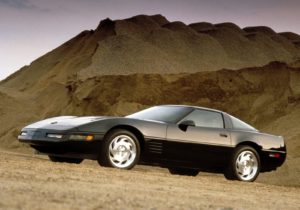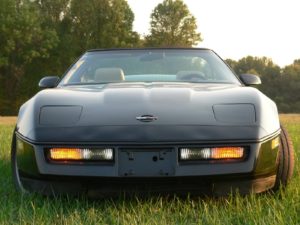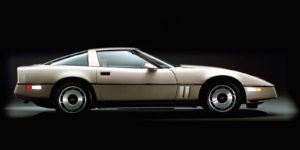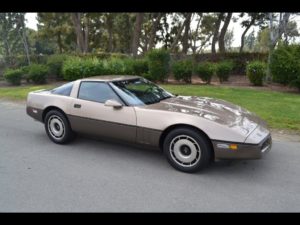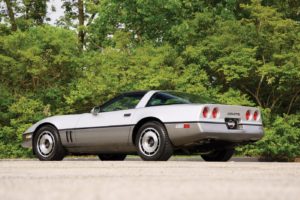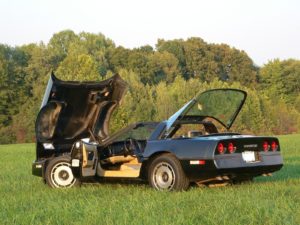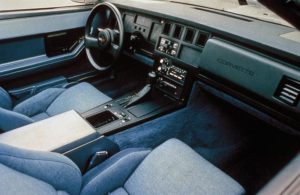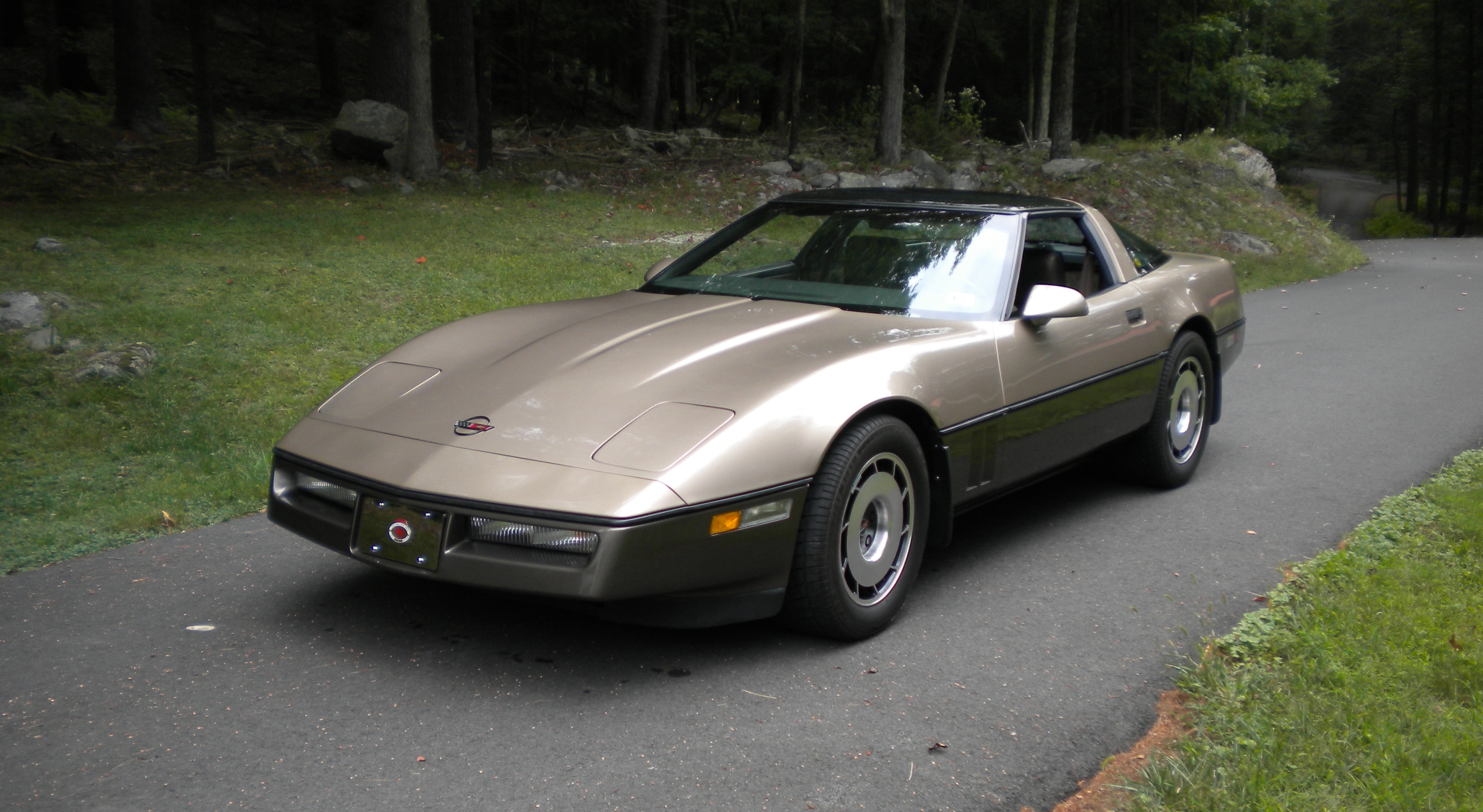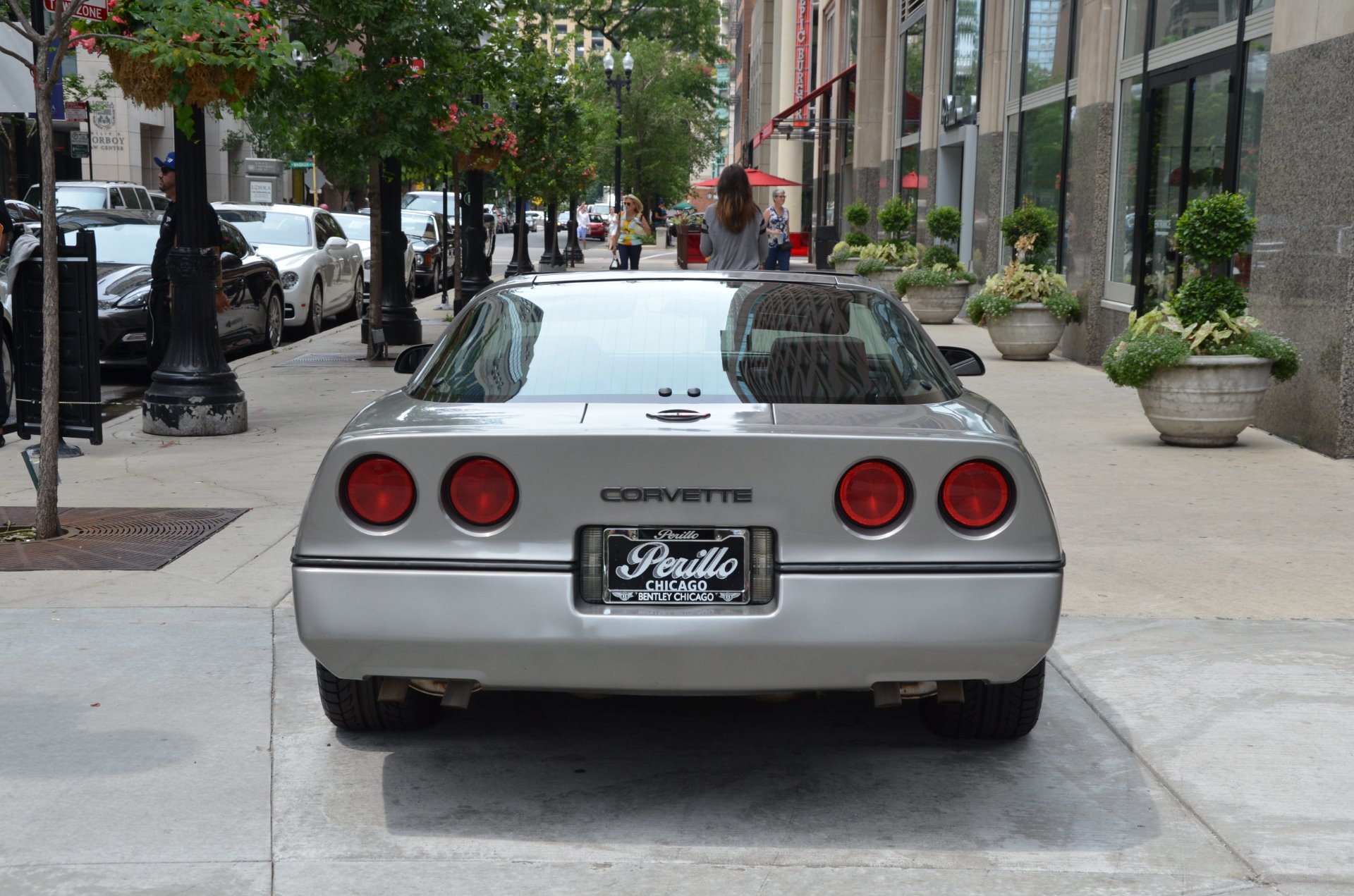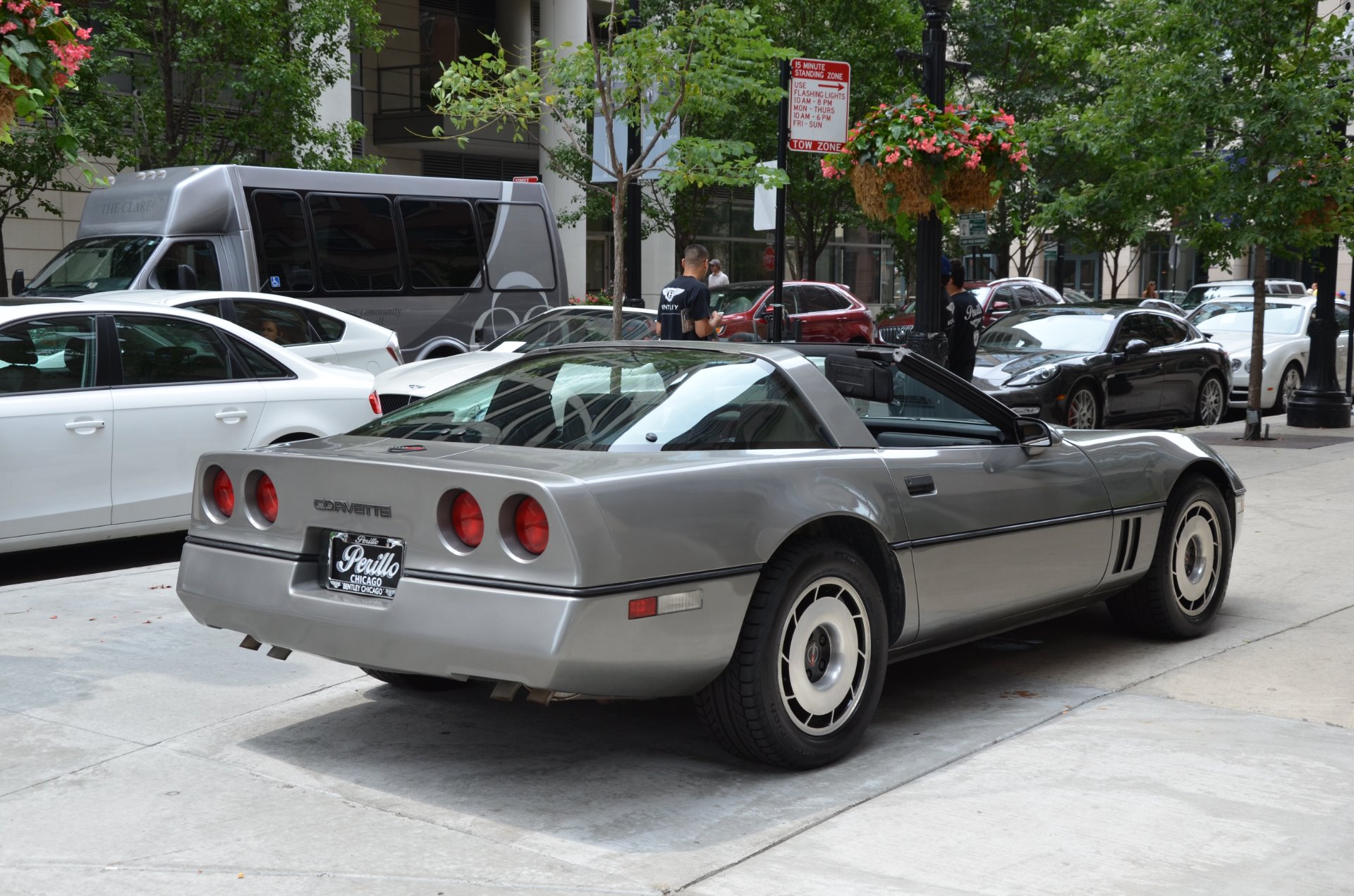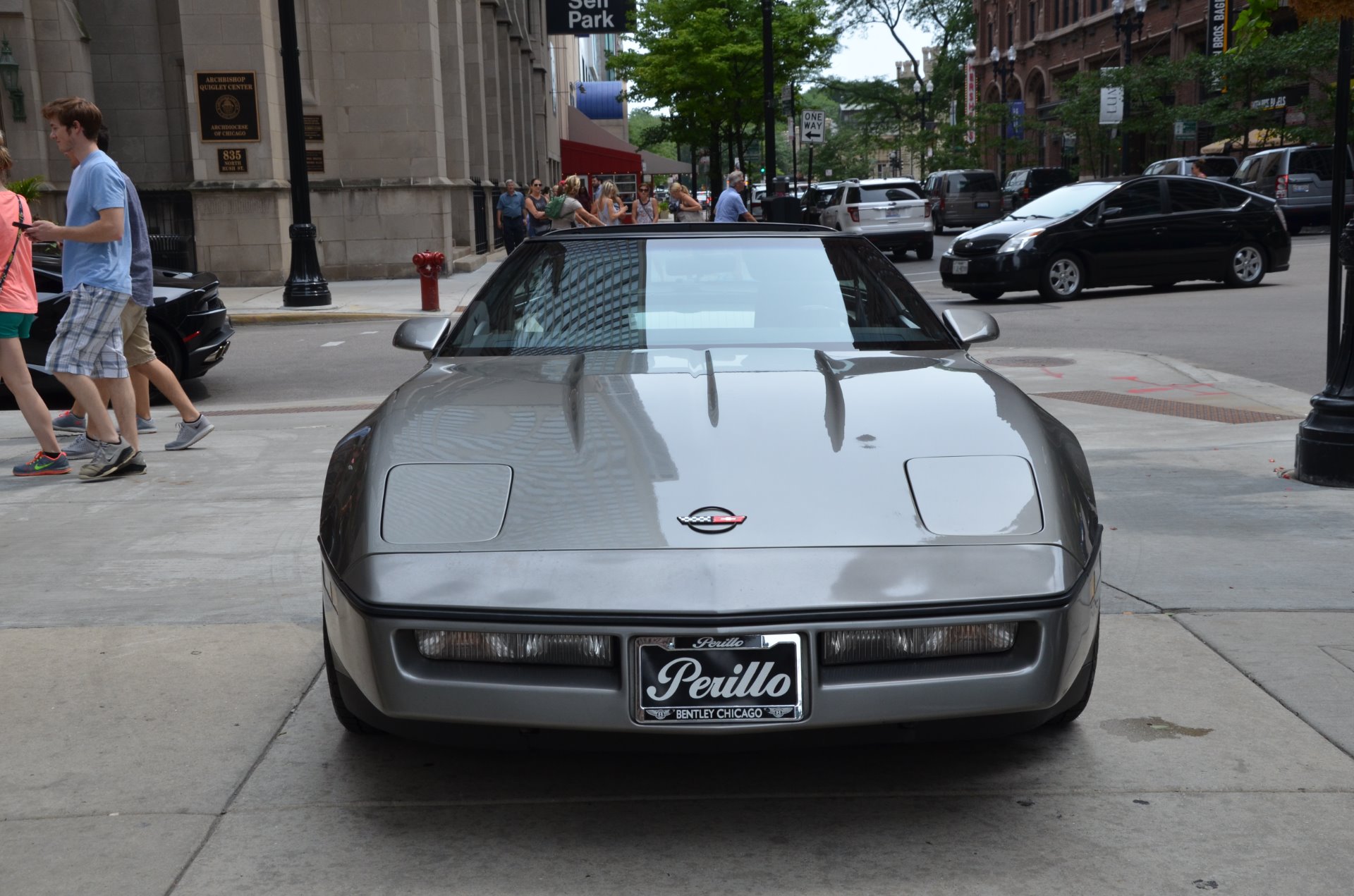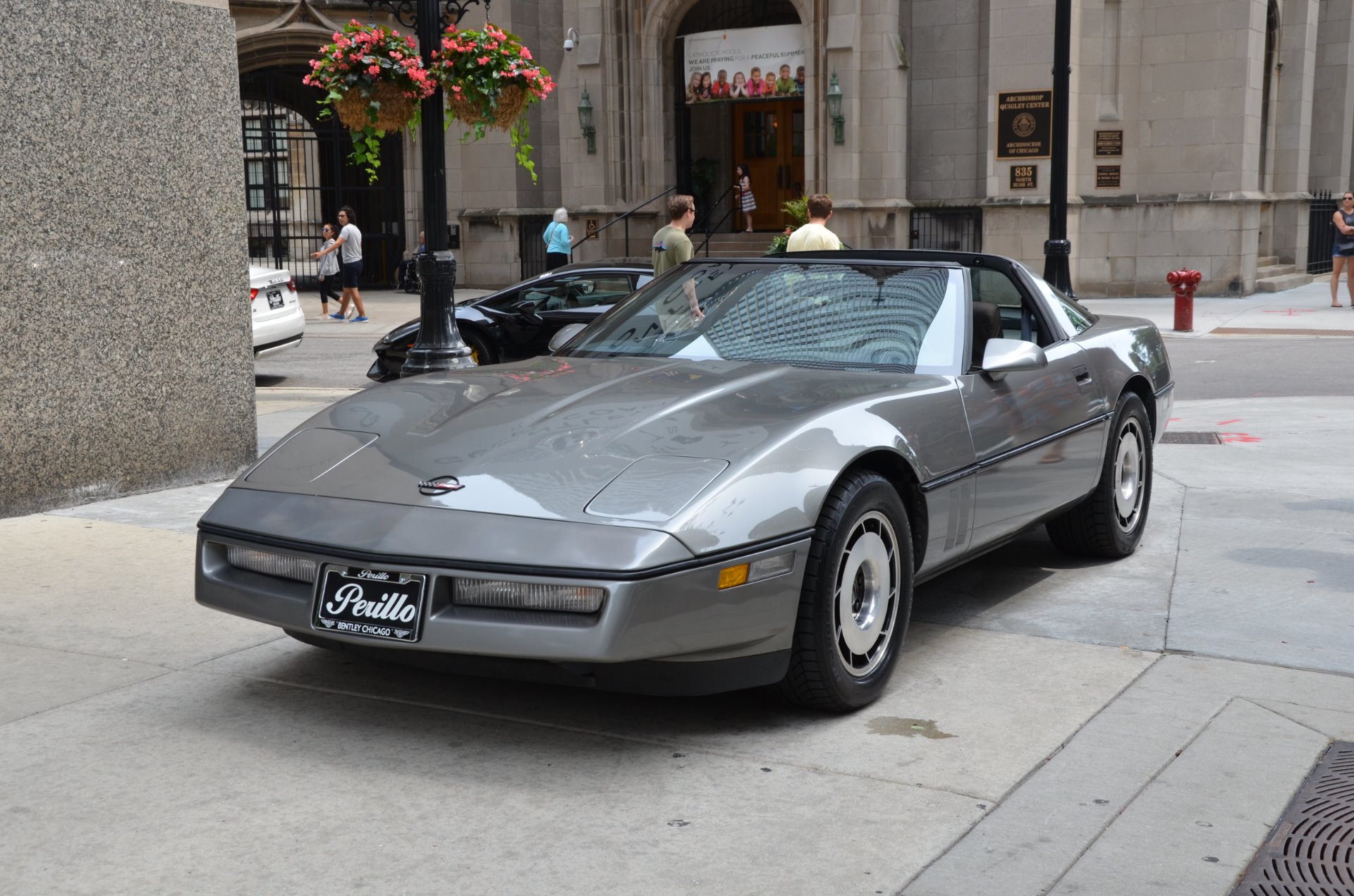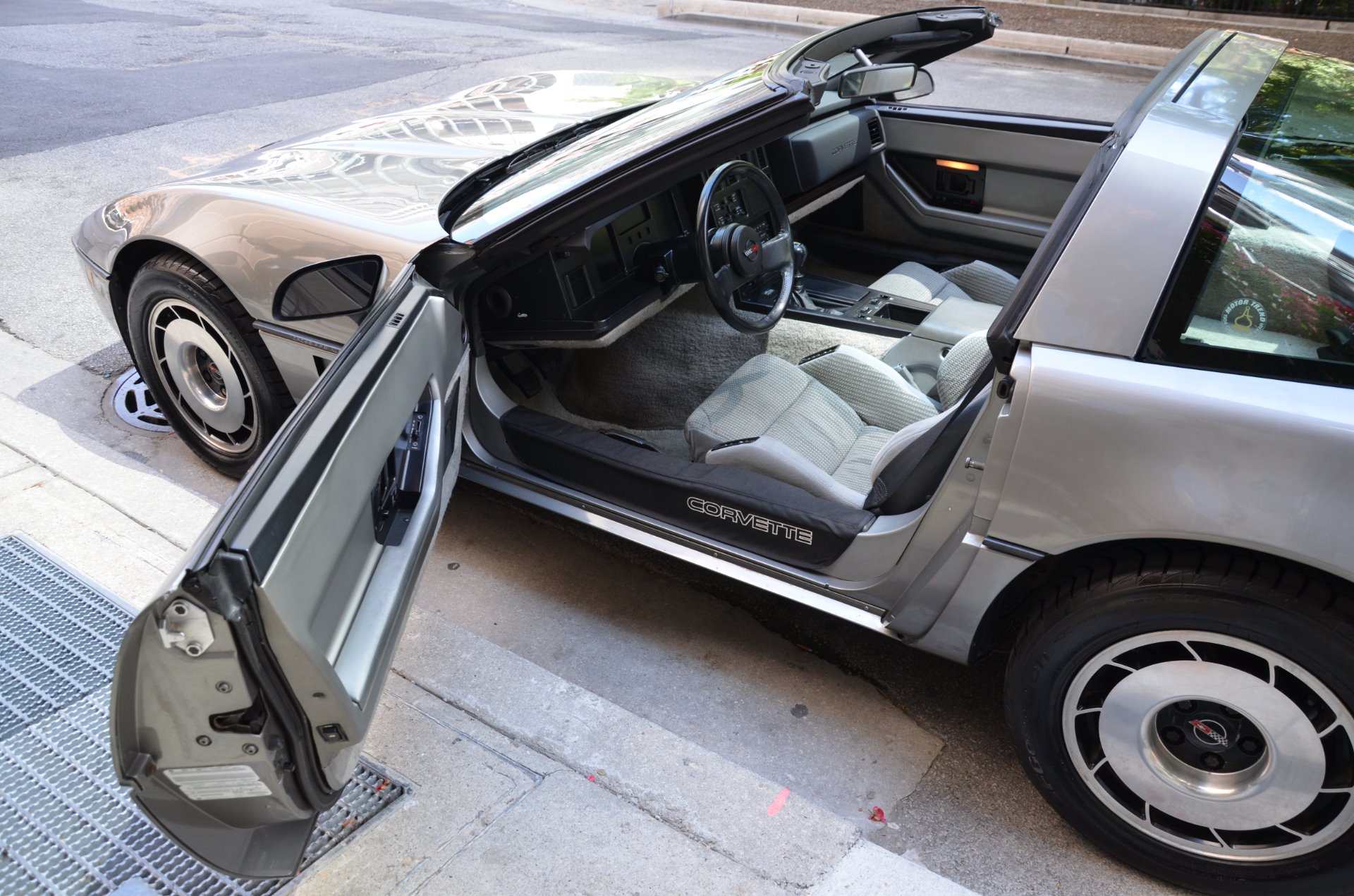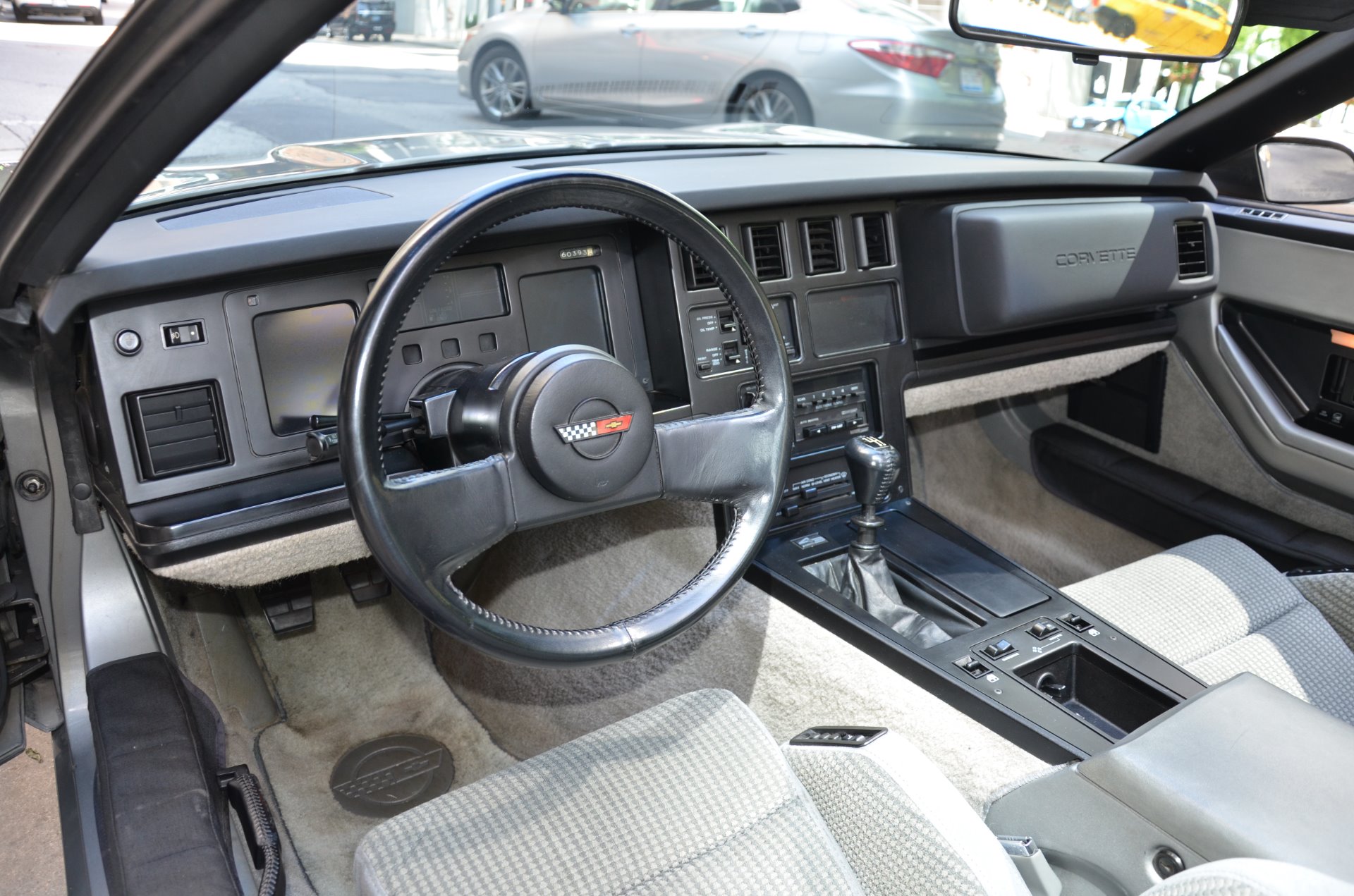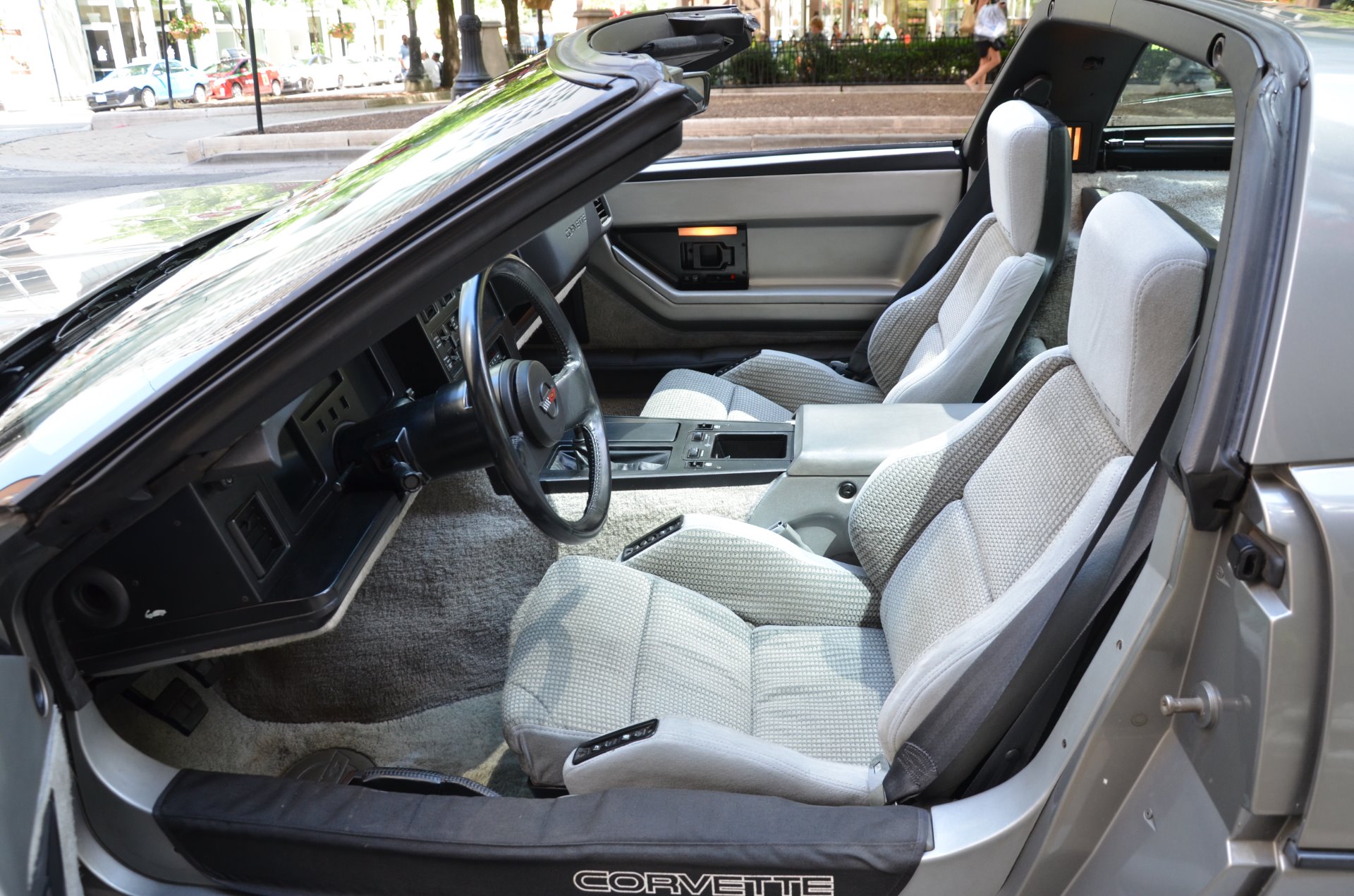Pricing: $27,027.00 (Coupe), $32,032.00 (Convertible)
Engine options: 350CI, 230/235 Horsepower, Tuned-Port Fuel Injected L98 V8 Engine.
Transmission: 4-speed automatic (standard), 4+3 speed manual (optional)
Top speed: 150mph
Units Produced: 35,109
Available Colors: Silver Metallic, Medium Grey Metallic, Medium Blue Metallic, Yellow, White, Black, Gold Metallic, Silver Beige Metallic, Copper Metallic, Medium Brown Metallic, Dark Red Metallic, Bright Red, Silver/Grey, Grey/Black, White/Silver, Silver Beige/Medium Brown, Silver Beige/Black
Highlights of the year:
The arrival of the 1986 Corvette came with “VATS” or “Vehicle Anti-Theft System” in addition to the existing alarm system and as a result, Corvette theft dropped from 7% to less than 1% in 1986 and to near 0% by late 1987/early 1988.
Another advancement of the 1986 model year involved the introduction of the first anti-lock braking system to the Chevrolet Corvette. Antilock brakes (or ABS), which utilized the latest ABS II setup from Bosch in Germany, prevented wheel lock-up in extreme braking conditions and reduced/eliminated skidding and subsequent loss of control of the car. ABS was relatively new in 1986 and its usage was limited mainly to high-cost luxury cars.
The engines that were fitted with aluminum heads were rated at 235 horsepower, which was a 5 horsepower increase from 1985 and early 1986 models that were fitted with cast iron heads. Additionally, “low coolant” and “anti-lock” (in reference to the anti-lock brakes) instrument displays were also added. Wheels were given raised hub emblems and a bright brushed finish which replaced the black centers of the 1984 and 1985 models.
But for all of this, the most significant change didn’t come as an optional component, but rather as an entirely optional model type – the Corvette Convertible. Chevrolet engineers, aided in part by engineers from the “American Sunroof Company”, had stated that the C4 Corvette’s design had always been intended to support a convertible variant of the beloved coupe, and so they knew that transforming the car from coupe to convertible would be a straight forward process.
Interestingly, the arrival of the new Corvette Convertible in 1986 resulted in less than stellar sales. Probably due in large part to “sticker shock”, there were only 7,315 Corvette convertibles sold that year. While there was certainly no question that Corvette engineers, workers, and fans alike welcomed back the nostalgia-filled convertible, its price proved to put the car just out of reach for most consumers looking to purchase a convertible sports car that year.
Instead, sales of the Z51 Corvette continued to lead the way, although this option was only made available in coupe form. Even with its integral X-member reinforcement, the convertible chassis was still no match for the hearty, bone chattering Z51 performance package.
In all, 35,109 Corvettes were sold in 1986. While this number was still considered to be very respectable, it was the second year in a row that overall Corvette sales numbers had slipped. Despite these diminished numbers, there was no question that Corvette was continuing to move in the right direction.
Photos of the 1986 Corvette:
Sources:
https://www.corvsport.com/1986-c4-corvette/
https://www.corvsport.com/1986-c4-corvette-image-gallery/
